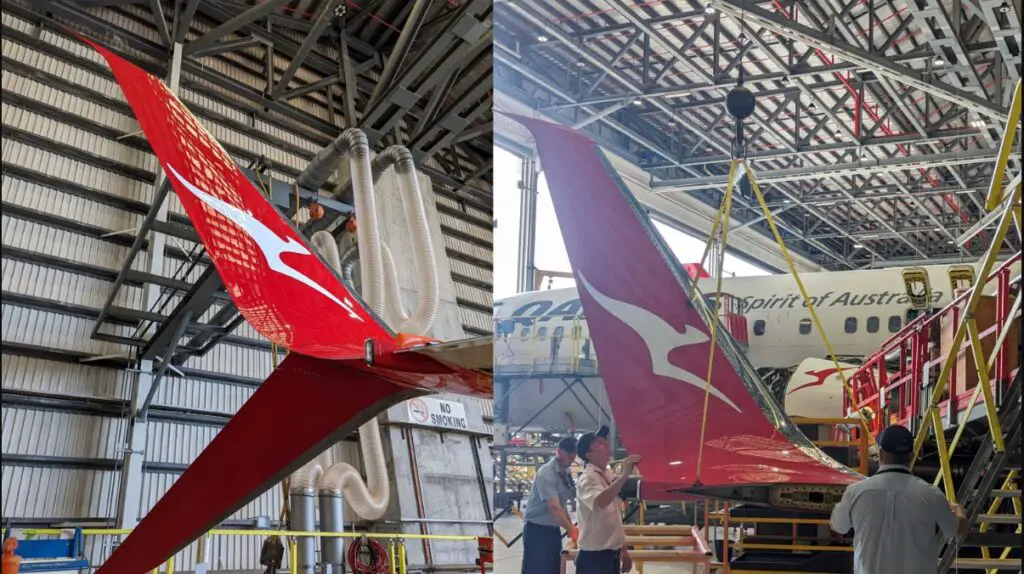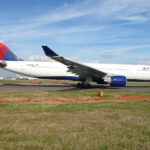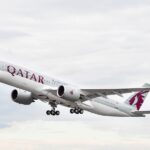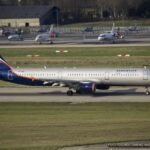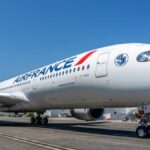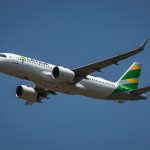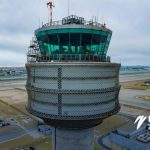Qantas is enhancing its operational efficiency by introducing new split scimitar winglets on 23 of its Boeing 737-800 aircraft. The split scimitar design, similar to that used in the MAX family, aims to increase fuel efficiency by up to 2% through the reduction of aerodynamic drag.
Australia’s main airline explained that each of these wingtips requires more than 400 man-hours and several days for installation and testing. «The wingtips help the aircraft fly more efficiently by reducing vortex generation,» stated Qantas. «The resistance created by the air swirling around the wingtip increases fuel consumption. These wingtips mitigate this by slowing down the swirling motion and reducing the creation of these vortices.»
Related content: Ryanair Begins Installing Split Scimitar Winglets on Its Boeing 737-800
The selected 737s for the upgrades primarily serve international destinations such as Bali and Fiji. Andrew Parker, Director of Sustainability at Qantas, emphasized the airline’s commitment to improving the operational efficiency of its fleet, stating, «As we continue to introduce more fuel-efficient aircraft, we also focus on optimizing the performance of our current fleet, and the new split scimitar winglets represent one of the various changes passengers will observe as we progress towards sustainability.»
The implementation of these wingtips aligns with Qantas’s comprehensive fleet renewal initiative, covering both domestic and international aircraft. On the international front, it will incorporate 12 Boeing 787s and 12 Airbus A350s to replace its A330 fleet. Additionally, the order for a dozen specially adapted A350-1000s will lead the Project Sunrise. On the domestic front, Qantas plans to acquire 20 Airbus A321XLRs and 29 A220-300s for its domestic routes. In this regard, the airline recently received its second A220, named «Koala.»

